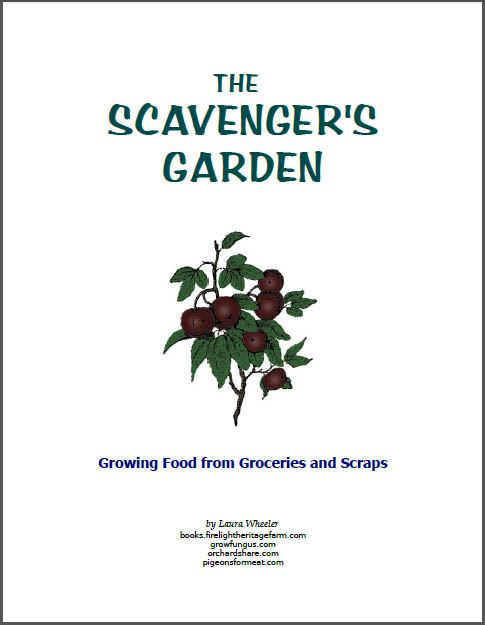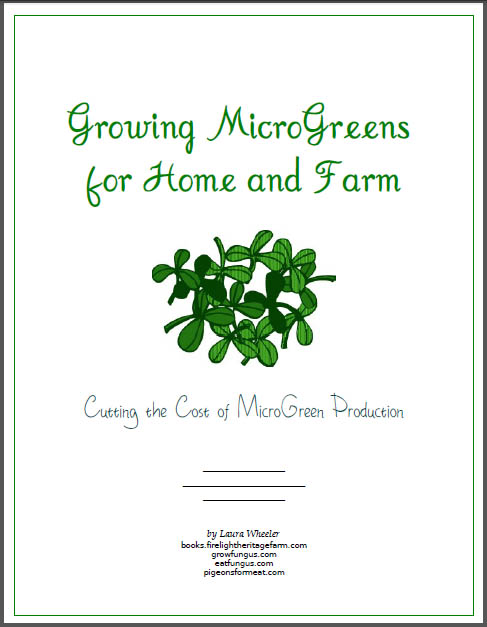 Click to Download Your Free Heritage Pickling and Culturing e-Book Now!
Click to Download Your Free Heritage Pickling and Culturing e-Book Now!
Instant Download, NO Registration Required!
How Much Is a Successful Garden Worth?
The garden in south Texas was about 40X50. About half of what we planted grew. And it grew AMAZINGLY. The other half sort of petered out due to the heat.
We spent about $50 on seeds, and another $20 on potato and onion sets. We spent about another $10 per month on extra electricity for the well pump to water the garden daily (in the Texas heat, before we could afford to get enough woodchips to mulch it in well). I do need to state that most of the time I spend closer to $150 on seeds, because I usually buy more specialty seeds. That year, we could afford nothing but the cheapie seeds from the discount racks at Wal-Mart. But they grew just fine, and it was a good choice for the situation at the time.
The garden began producing edible food within 6 weeks. Beginning with small salads, and working up to cabbage, broccoli, kale, carrots, sweet potatoes, watermelon, squash, zucchini, beets, okra, green beans, eggplant, tomatoes, and other crops. We also harvested turnips, radishes, and a bounty of weeds, which fed our livestock.
One of the keys to the early production and value is that I always broadcast seed my lettuces and spinach, so we can harvest baby spinach and baby lettuces within just a few weeks. We thin them and eat the thinnings for salads. That tasty tender stuff sells for $5-6 for a box of them in the stores. The earliest crops you harvest, if you plan your garden smart, are actually worth more than some of the later season crops.
That garden bore well for about three months, then the heat got some of the plants that had grown well, and the lighter weight greens diminished and the eggplant and okra, mustard, and other hot weather crops came on.
How much was it worth? I can't tell you how many pounds of vegetables it produced. I can only tell you what it saved us in grocery money. We calculated that the garden saved us somewhere in the neighborhood of $1500. And that does not count what we fed to the animals, or what we gave to neighbors who came by.
For some families, the vegetables we harvested would have saved only $600. For us, it saved much more. It all has to do with what you normally buy, and what you compare it with. We were comparing the price with mostly organic foods. Some families would compare with strictly non-organic. We also did not decrease our meat consumption, but merely replaced the fresh fruit and vegetables we normally purchased, with items from the garden.
What no money can compensate for is going down to the garden each morning and harvesting what is ready, and carrying a laden basket back to the house, and creating fresh meals based on what we brought up. You cannot put a price on the crock full of fresh brined pickles that the kids began to munch as soon as they were cured enough to taste like Dill pickles. That enjoyment has no price!
I learned to use eggplant. And I learned that I like the slim Japanese eggplant better than the fat eggplant - the flavor and texture is better to me. I learned that no matter how I prepare it, except for minestrone, or gumbo, I do not like okra.
We had to move, and were forced to dig our potatoes before they were mature. But the baby potatoes were excellent.
The garden was a lot of work. But it produced bountifully, even though not everything we planted did well. If it had, the value would have been approximately double.
When someone talks about the financial value of a garden, I always use this one as an example, for one specific reason.
We spent less on that garden than on any other garden in our life. In spite of not buying specialty seeds, that garden gave us a tremendous bounty. Our early gardens did the same, when we could not get special seed varieties. That garden though, used ONLY cheap seeds, and still gave us a bounty.
So what is YOUR garden worth?








